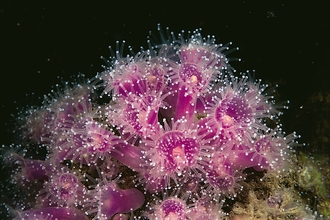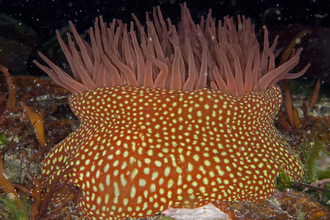Daisy anemone by Devon Wildlife Trust
Daisy anemone
It is easy to be confused by these flower-like animals with flowery names! The ‘daisy’ anemone is one of the larger UK anemone species!
Scientific name
Cereus pedunculatusWhen to see
April - October.Species information
Category
Statistics
Up to 12cm tall and 7cm wide.Conservation status
Common.





